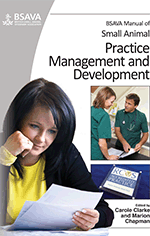
Full text loading...

Preparation and surgical areas in a veterinary practice can vary greatly – from multi-function rooms in a lock-up branch practice, to multi-theatre suites in a purpose-built specialist referral centres. No matter the size or the financial constraints of the veterinary practice concerned, excellent aseptic technique and high operational standards must still be achieved. This chapter advises on design considerations; preparation room equipment; equipment for anaesthesia; theatre equipment; pressurized gasses and liquid nitrogen; care of surgical instruments; and managing the surgical team.
The surgical suite, Page 1 of 1
< Previous page | Next page > /docserver/preview/fulltext/10.22233/9781910443156/9781910443156.8-1.gif

Full text loading...



















































